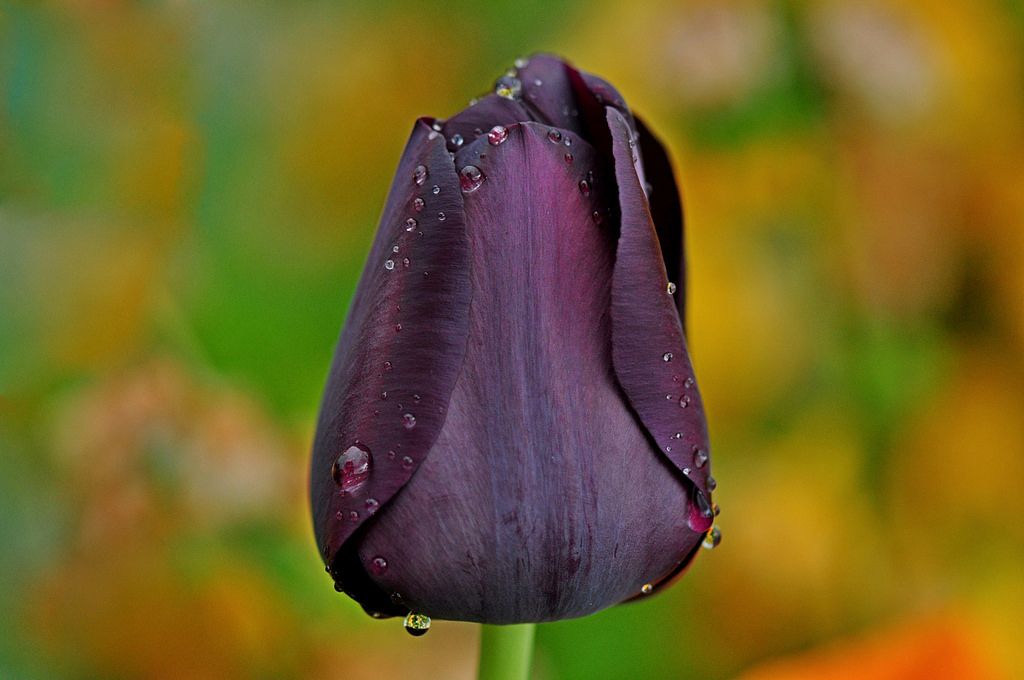The Regal Beauty of Pink Diamond and Queen of Night Tulips
As a gardener who loves unique flower forms and rich, vivid colors, I’m always seeking out tulips that make a dramatic impact in spring. Two of my long-time favorites are the deep purple ‘Queen of Night’ and soft pink ‘Pink Diamond’ tulips, which combine beautifully for a regal display.
In this article, I’ll provide tips for growing these striking late-blooming tulips together, along with a brief profile of each variety Read on to learn why pairing ‘Queen of Night’ and ‘Pink Diamond’ results in a show-stopping garden duo.
An Elegant Color Combo
While tulips come in a huge array of dazzling hues, the rich, saturated purple of ‘Queen of Night’ is truly exotic. This nearly black flower has an intoxicating, gothic beauty about it.
The lighter, brighter pink of ‘Pink Diamond’ offers the perfect counterpoint. Its soft, romantic color reminds me of airy ballerina tutus and flowers made of spun sugar.
Together, these two tulips evoke images of medieval queens, tiaras, and royal gowns. The mix of deep purple and pale pink is elegant, feminine and simply stunning in the spring garden.
Growing ‘Queen of Night’ Tulips
‘Queen of Night’ is a Darwin Hybrid type tulip belonging to the Single Late bloom class. This means it has a tall, stately form with large, oval-shaped blooms on sturdy 24-30 inch stems.
The flower color is so deep purple that it appears jet black. The petals have a velvety sheen and subtle ruffling at the edges. Inside, there is a blue-purple base. This exotic tulip blooms in mid to late spring.
Like others in the Single Late class, ‘Queen of Night’ works beautifully in perennial beds and borders. The tall, strong stems also make it exceptional as a cut flower.
For the richest color, plant bulbs in full sun. Well-drained soil amended with compost is ideal. Allow 4-6 inches between bulbs.
Highlights of ‘Pink Diamond’ Tulips
‘Pink Diamond’ is a member of the Single Late tulip class like ‘Queen of Night,’ with large blooms on tall, sturdy stems that bloom in mid to late spring.
The color is a luminous light pink that resembles the petals of cherry blossoms. The flower shape is a classic tulip form – oval and cup-shaped. The petals have ruffled edges and pointed tips.
This variety performs best in full sun for the truest color. Well-drained soil enriched with organic matter encourages strong growth. Space bulbs 4-6 inches apart. The height reaches 24-30 inches.
‘Pink Diamond’ makes a graceful cut flower and works nicely in perennial and mixed borders. The soft pink color pairs beautifully with pastels and darker blooms.
Combine Queen and Diamond for a Royal Display
Growing ‘Queen of Night’ and ‘Pink Diamond’ tulips together results in a regal spring display. There are several ways to showcase these blooms:
- Plant in drifts or swaths of each variety for bold color contrast.
- Alternate bulbs in rows or clusters for a checkerboard effect.
- Edge a bed of ‘Queen of Night’ with a border of ‘Pink Diamond’ or vice versa.
- Mix bulbs randomly for an informal, scattered look.
- Grow in containers for a movable display with height and interest.
- Cut stems to arrange indoors in jewel-toned bouquets.
When pairing these tulips, choose companions like forget-me-nots, parsley, daisies, hyacinths, and purple-leaved heuchera. Avoid clashes with fiery reds or citrusy colors.
With their regal elegance and complementary hues, ‘Queen of Night’ and ‘Pink Diamond’ tulips are sure to add a touch of beauty and flair to your spring landscape.
Other Notable Black Tulips
Beyond the classic ‘Queen of Night,’ there are several other deep purple and black tulips to consider:
- ‘Paul Scherer’ – Slightly lighter purple than ‘Queen of Night’ on 24 inch stems.
- ‘Black Parrot’ – Deep purple-black with dramatically ruffled, parrot-shaped petals.
- ‘Ebony Queen’ – Large purple-black blooms on sturdy 24 inch stems.
- ‘Black Hero’ – Very dark purple that appears jet black under certain light.
- ‘Queen of Marvel’ – Deep reddish-black with bright yellow center flame.
More Outstanding Pink Tulips
Some other excellent pink tulips that pair well with dark purples include:
- ‘Pretty Princess’ – Vibrant fuchsia-pink with white centers.
- ‘Strong Gold’ – Light pink with dramatic yellow streaks and flames.
- ‘Angelique’ – Soft baby pink Single Late with elegant shape.
- ‘Pink Impression’ – Vivid rosy-pink Darwin Hybrid that’s earlier blooming.
- ‘Menton’ – Frothy, peach-pink petals edged with green.
Experiment with mixing different pink and purple varieties for extra flair! Just be sure to plant bulbs of the same bloom time together. Combining early and late bloomers results in a disjointed display. With thoughtful planning and pairing, you can create unforgettable tulip combinations.
The Single Late Tulip, Queen of The Night – Bulbs for Fall Planting
FAQ
Do Queen of the Night tulips come back?
Are Queen of the Night tulips perennial or annual?
How do you take care of queen of the night tulips?
What is the most expensive tulip in the world?
- The Ultimate Guide to Growing Strawberries in Raised Beds - August 8, 2025
- No-Dig Garden Beds: The Easiest Way to Grow a Beautiful Garden - August 6, 2025
- How to Protect and Preserve Wood for Raised Garden Beds - August 6, 2025

